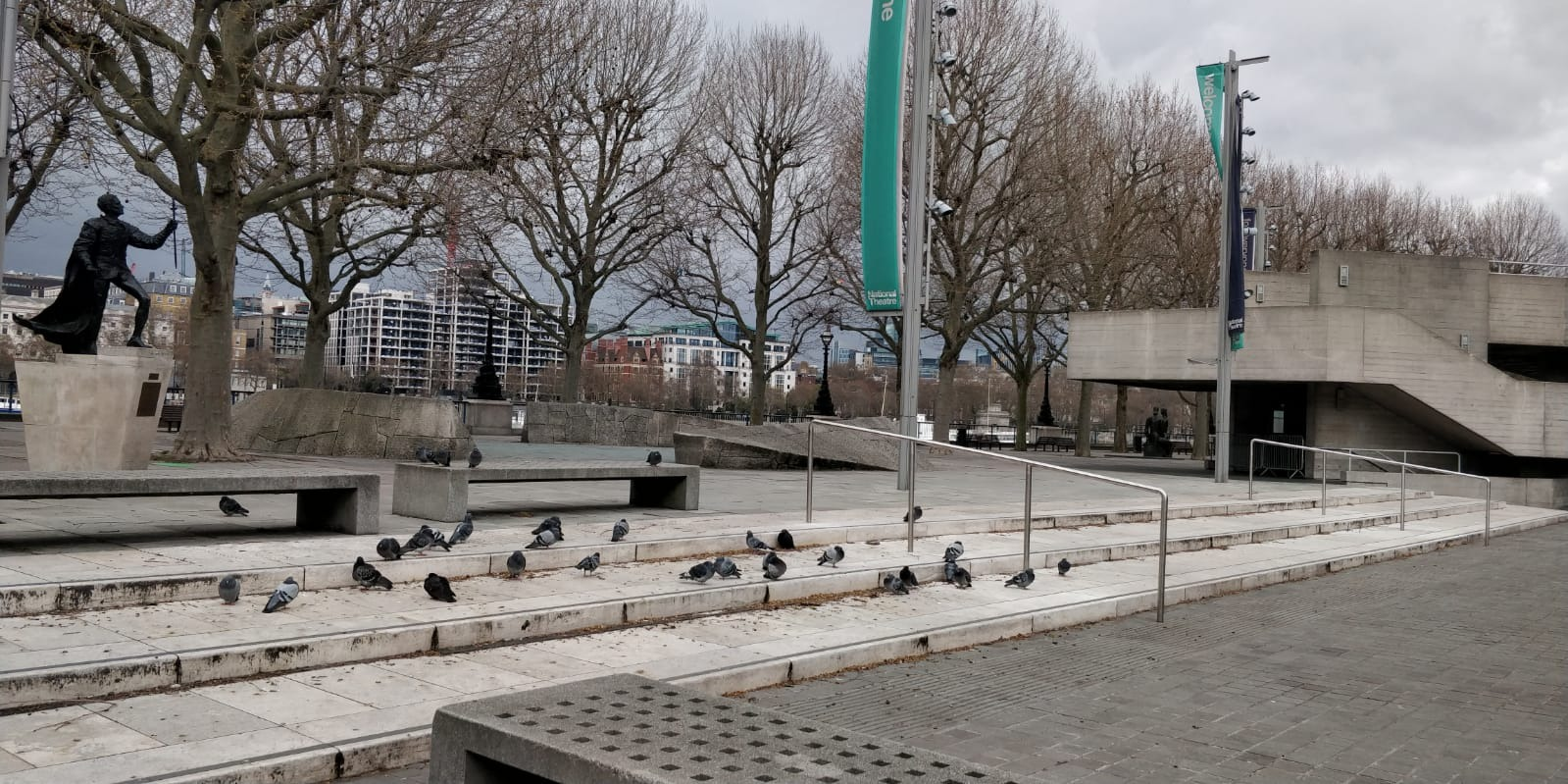
There are more pigeons than people on the South Bank
When the audiences go, what happens to the buildings left behind?
While our concert halls, theatres, galleries and museums sit empty, dedicated teams take centre stage to make sure venues are ready for our return. Kieron Lillis explains the challenge facing the National Theatre.
You packed your laptop, cleared out the communal fridge, and even remembered to take the office plants with you. Perhaps you shed a tear as you left your workplace, uncertain as to when you’ll see your desk and colleagues again.
For some of us it’s our job to keep these buildings living and breathing while our colleagues work from home. My workplace is a landmark: an iconic building that’s a far cry from the Clacton caravan rentals I enjoyed as a kid, where you could turn up to use it and then close it all down and lock up until the same time next year.
These iconic buildings are not holiday homes that we can turn on and off after an Easter Break. If we don't keep the water flowing in our taps, showers and cooling towers, Legionella bacteria will build up within days, offering fair competition to Covid-19. If our basement pumps fail, some of our subterranean levels will find themselves under water in less than 24 hours. Crazy as it might sound, quite a lot of buildings house their main electrical switch-gear and heating plant in the basement. Those are just two of a longer list of items which, if not carefully monitored and maintained, will mean that even when we’re free to return, the building itself wouldn’t be fit for use.
Out of obscurity
It is in these times that departments usually operating in relative obscurity become the most visible: the housekeeping staff, security officers, building service engineers and technicians are all vital in keeping our buildings secure and preventing the fabric deteriorating and becoming unsafe. For most organisations, apart from the people, the next biggest asset is their buildings. To take care of our building there’s a skeleton staff scheduled for the closure period, rotating them to keep all our risk of exposure to a minimum. The same is going on in venues all over the UK.
We are a theatre, not a museum or gallery. We don’t have artefacts to manage on the scale of, for example, the British Museum or the V&A: the challenges presented to those organisations in the area of conservation are extraordinary. But we do have an archive storing the cultural heritage of the National Theatre and we must ensure the temperature, ventilation and flood warning systems are running and monitored. I'm sure this episode in our history will at some point have its own place in the NT’s Archive’s collection.
White noise
We are the teams who are travelling in, to do the essential work that can’t be done from home. I’m putting the safety and wellbeing of the teams first, and we are keeping our distance, cleaning our hands and ensuring our work environment as clean as possible.
Right now, there’s an eerie sound to this bend in the Thames. It’s not silence as such but a kind of white noise. No percussion from the skateboarders under the South Bank Centre or rhythm section from the tourists, planes and buses. There are more pigeons on the pavements of the South Bank than people.
When the full company returns, and the building reopens, we hope colleagues will take a moment to reflect on how their work environment was cared for in their absence. Perhaps the relative obscurity in which the facilities management teams previously operated will be a thing of the past and we will remain ‘visible’. Whatever the case, we will happily go back to the regular routine of vacuuming carpets, dusting surfaces, patrolling our spaces, changing lamps and unblocking loos!
I love the linear and angular complex concrete slab of 1970's brutalism I have been entrusted to maintain. I am fortunate to have a great team that feel the same way. In these challenging times that love is priceless.
Kieron Lillis is Facilities Manager at the National Theatre.
Join the Discussion
You must be logged in to post a comment.